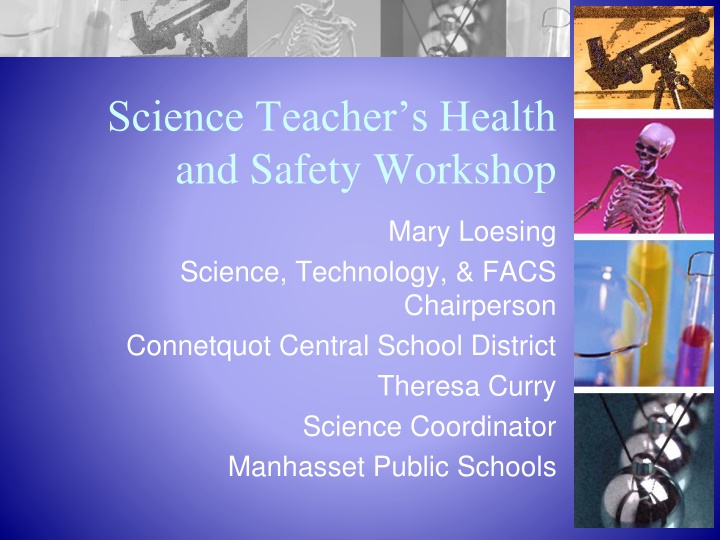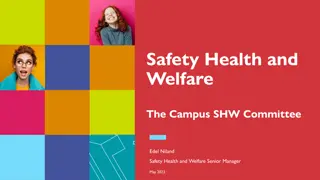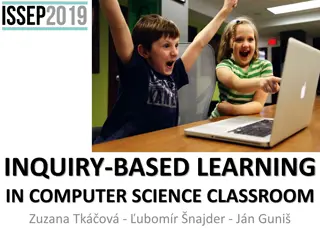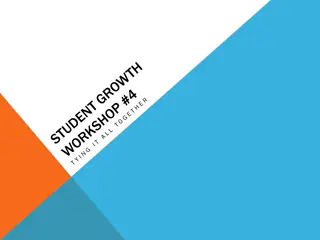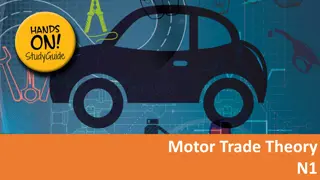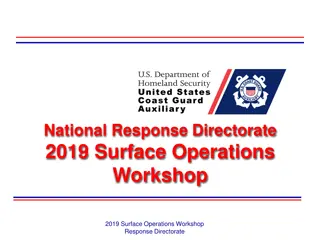Science Teachers Health and Safety Workshop Overview
This workshop covers important topics such as chemical hygiene plans, purchasing, storage, and inventory of chemicals, as well as the role of a chemical hygiene officer. It emphasizes the importance of proper chemical handling and storage to ensure safety for employees and students. The workshop also discusses the required documentation and procedures to maintain a safe science laboratory environment.
Uploaded on Sep 29, 2024 | 1 Views
Download Presentation

Please find below an Image/Link to download the presentation.
The content on the website is provided AS IS for your information and personal use only. It may not be sold, licensed, or shared on other websites without obtaining consent from the author.If you encounter any issues during the download, it is possible that the publisher has removed the file from their server.
You are allowed to download the files provided on this website for personal or commercial use, subject to the condition that they are used lawfully. All files are the property of their respective owners.
The content on the website is provided AS IS for your information and personal use only. It may not be sold, licensed, or shared on other websites without obtaining consent from the author.
E N D
Presentation Transcript
Science Teachers Health and Safety Workshop Mary Loesing Science, Technology, & FACS Chairperson Connetquot Central School District Theresa Curry Science Coordinator Manhasset Public Schools
Agenda Chemical Hygiene Plans Chemical Purchasing and Storage Chemical Inventory and Disposal Engineering Controls Teacher Training
Chemical Hygiene Plans Required by OSHA 1910.1450 Enforced by Department of Labor Public Employee Safety and Health PESH in New York State Written document with policies and procedures to protect employees and indirectly students.
Chemical Hygiene Officer Appointed by the Board of Education Ideally, a certified chemistry teacher Position can be separated into an Officer for Laboratory Chemicals and an Officer for Buildings and Grounds Chemicals
Chemical Purchasing Evaluate hazards and physical properties of each chemical before it is ordered. Order only as much of each chemical as will be used in one school year. Know how the chemical will be disposed of before it is ordered. Everything that is ordered must be entered into the chemical inventory.
Chemical Inventory The chemical inventory should be updated annually. In the event that first responders, PESH or the DEC is called to your school, they will expect to see a copy of your chemical inventory. MSDS Sheets must be available. All containers must be properly labeled.
Chemical Storage Organize chemicals by compatibility, not alphabetically. The chemical storage room must remain locked, and students should not be permitted to enter. Acids should be stored in an acid cabinet, with nitric acid segregated from the others.
Chemical Storage Cont. Flammables should be stored in an approved flammables cabinet. Shelves should have a lip. Large, heavy containers should not be stored on high shelves. When chemicals are received, the bottle should be dated.
Chemical Disposal Contractors dispose of waste at considerable cost to the district. Your buildings and grounds department should have a list of approved contractors. Any and all chemicals that are old and not used should be disposed of. Keep records of what is disposed of, you are responsible for chemicals from cradle to grave.
Chemicals That Should Never be in Schools Nitroglycerin, benzene, acrylonitrile, arsenic and compounds, benzoyl peroxide, carbon disulfide, chlorine, colchicine, HF, hydrobromic acid, mercury, mercuric chloride, phenol, potassium, phosphorus, uranium.
Non-Approved Chemicals No one should bring chemicals into the school. Anyone who does could be subject to large fines. No experiments should be conducted with chemicals that are not part of the school s inventory.
Engineering Controls Safety Glasses and Chemical Splash Goggles Fume Hoods Aprons Gloves Eyewash/Safety Showers
Goggles Safety Glasses do not protect from liquid splashes For liquids use indirectly vented chemical splash goggles Eye protection should be worn in the lab at all times.
Fume Hoods Should be closed when not in use Not a storage site for chemicals 80-100 fpm velocity, not to exceed 120 fpm which causes turbulence Should be tested annually to ensure that hood vents to the outside.
Gloves and Aprons Do not use latex gloves due to allergies and poor chemical resistance. Use nitrile, pvc or polyethylene, of these nitrile is the most chemical resistant. Have gloves available in a variety of sizes.
Gloves, Cont. Online databases from NIOSH have glove compatibility charts. Chemical stockroom and cleaning may require different gloves, such as utility gloves which are thicker and longer.
Eyewashes and Showers ANSI Z358.1 Standards Units should be activated weekly. Units should be installed within 10 seconds travel and should be identified with a sign. Eyewashes must deliver 1.5 liters of potable water per minute for 15 minutes to both eyes simultaneously.
Eyewashes & Showers, Cont. Showers must deliver 20 gallons per minute flow. Water should be tepid, 60-100o F. Flush units to prevent bacteria and other contaminants from building up in the unit.
Training All staff that use chemicals as part of their job responsibilities should receive yearly Right-to Know and Blood Borne Pathogens training. Supervisors should keep a signed log of all that attend the yearly training. Flinn Scientific offers free online safety videos, student safety contracts and safety certification.
Issues, Concerns Use common sense. Document safety discussions in your plan book. This is your legal record that such discussions took place. Always try out a lab or demonstration before it is done in front of students. Your safety and that of your students should be your paramount concern. Questions?
